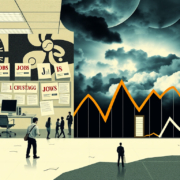Inflation Insights: Navigating Doubts as Critical CPI Data Approaches Amid Government Shutdown
This Week’s Critical Inflation Report Arrives Amid Growing Doubts Over Data Accuracy
Published: October 21, 2025 | Updated: October 21, 2025
Financial markets wait for the September Consumer Price Index report on Friday. Investors note its high importance. They see a gap between the report and its data. Some fear the collection methods now add doubt.
CPI Report Under Intense Scrutiny
The Bureau of Labor Statistics compiles the CPI. Many see it as a top source for U.S. economic data. Recent methods include in-person visits, phone calls, and written replies. These steps now face strong doubt. A government shutdown in Washington, D.C. has made work harder for federal teams, and the BLS feels the strain.
Vishal Khanduja, who leads broad markets fixed income at Morgan Stanley Investment Management, said,
"Skeptics like me will check how pure this data is. We ask how the team worked with fewer staff. We also ask what steps they took before the report came out."
The BLS faced staff cuts even before the shutdown. It even dropped some urban areas from its sampling. With most offices closed, putting the report together is more challenging. This gap may keep the report from showing the full picture of inflation.
Earlier this year, President Donald Trump removed former BLS Commissioner Erika McEntarfer. He did so after data on nonfarm payrolls went lower than expected. This move highlights the strong pressure on the agency.
What Economists Are Expecting
Many economists forecast small moves in the CPI. Dow Jones experts expect annual inflation to hold at about 3.1%. This rate applies to both the main index and the version that cuts out food and energy. They predict month-over-month gains of 0.4% for the full index and 0.3% for the trimmed version. These levels follow August’s numbers.
Most other economic reports have stalled because of the government shutdown. The Labor Department recalled BLS staff for this report, as the CPI helps set Social Security cost-of-living adjustments.
Citigroup economist Veronica Clark shared her view:
"As the shutdown may last into November, we worry about missing real-time numbers. The data in November seems at risk too. We will look for any hints on October CPI work with Friday’s report."
Market and Policy Implications
The Federal Reserve meets next week against this backdrop. Experts expect a 0.25 percentage point drop in rates from the current 4.00% to 4.25%. A similar move in December is also likely. Yet, the long-term view beyond 2025 stays unclear. President Trump now supports lower rates. He may soon pick a new chair for the Fed who shares this view.
Market experts caution that weak inflation data may make the Fed’s task more complex.
Mike Wilson, Chief Investment Officer at Morgan Stanley, told CNBC,
"I think we may not learn much new from this CPI data. I see it as a sign for the Fed to cut rates in a stronger way. But the risk is that the data may not back a deeper rate cut."
Key Takeaways
• The September CPI report shows doubts due to fewer staff and work issues amid the shutdown.
• Despite worries, most forecasters see small changes that follow August’s trends.
• Most other economic reports are on hold, leaving limited fresh data for markets and policy teams.
• The Federal Reserve may cut interest rates soon, though future policy remains unclear.
• Political moves and changes in leadership add more strain to trusting the data.
As the markets wait for Friday’s numbers, investors, economists, and policy teams will study the data with care. They know that these unusual times may hide the true view of the U.S. economy.
Full money-growing playbook here:
youtube.com/@the_money_grower









